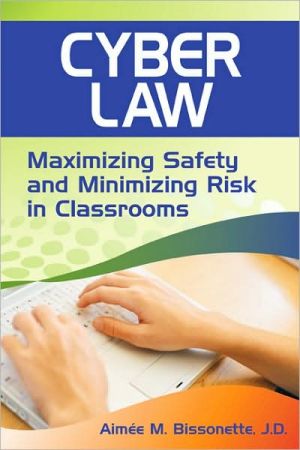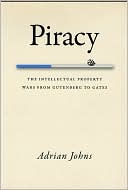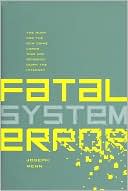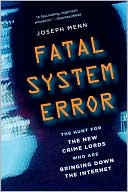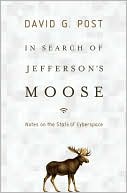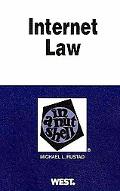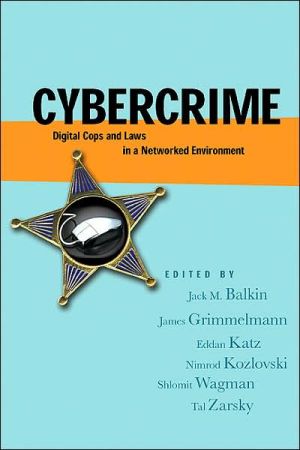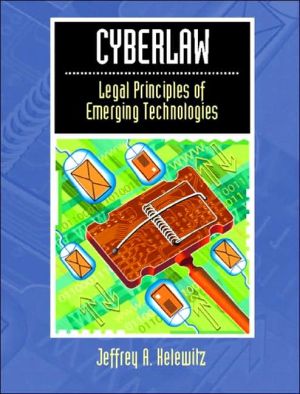Cyber Law: Maximizing Safety and Minimizing Risk in Classrooms
Concerned that the fast-evolving technology used to empower students also puts schools at risk? The legal issues that affect today's classrooms require a heightened awareness and understanding of Internet safety and cyber law.\ This timely reference, covering legal issues related to the Internet and technology use, is an essential overview for teachers, media specialists, and administrators. Lawyer and educational policy expert Aimee M. Bissonette provides up-to-date research, jargon-free...
Search in google:
An essential overview of legal issues related to technology, this resource provides case summaries and proactive strategies on privacy, security, copyright, appropriate online behavior, and more. VOYA Social networking. Cell phone cameras used to send sexy photos. Texting used to cheat on exams. Teachers moonlighting at comedy clubs. Free speech versus school rules. Current and emerging technologies not only have tremendously advanced learning, but they also have enormously complicated life for students, teachers, and administrators who are navigating the legal issues involved in dozens of scenarios. Bissonette's wellorganized, well-researched book is a manual for how to do it right, how to do it efficiently, and how to prepare for the future. She emphasizes repeatedly that the first order of business is to have clear, well-written policies that have been vetted by each school's legal team. She delineates the difference between legal and ethical issues and offers solutions for each category. She tackles cyberbullying and the use of the Internet by staff and students, and spends a chapter on copyright challenges in the classroom. Each chapter has a checklist and a sidebar box for online resources. Bissonette, an attorney and teacher, offers samples of policies geared to specific concerns, such as social networking and blogging, as well as an extensive example on acceptable use. A sign of the blistering pace of changing technology is that this 2009 resource has no mention of Twitter, which clearly needs to be addressed. It is an invaluable reference that should be part of all school districts' professional resources. Reviewer: Beth E. Andersen
Acknowledgments viAbout the Author viiIntroduction 11 Cyberbullying Curbing Student Use of Technology to Intimidate and Harass Others 42 Student Use of the Internet Reducing Inappropriate Internet Behaviors 183 Staff Use of the Internet Drawing a Line Between Teacher's Public and Private Lives 294 Privacy and Security Protecting Student Information 385 The School as an Internet Service Provider Providing Access and Protecting Students 496 Copyright Law in the Classroom Steering Clear of Legal Liability 597 Policies, Procedures, and Contracts Communicating Expectations to Teachers, Students, and Parents 728 Ethical Issues Developing Responsible Internet Citizens 809 Looking Ahead Keeping an Eye on the Future 87Resource A: How Laws Affect the Schools and Teachers Who Embrace Technology in Learning 90Resource B: Sample Acceptable Use Policy 93Glossary of Terms 104References 107Suggested Readings 109Index 111
\ VOYA - Beth E. Andersen\ Social networking. Cell phone cameras used to send sexy photos. Texting used to cheat on exams. Teachers moonlighting at comedy clubs. Free speech versus school rules. Current and emerging technologies not only have tremendously advanced learning, but they also have enormously complicated life for students, teachers, and administrators who are navigating the legal issues involved in dozens of scenarios. Bissonette's wellorganized, well-researched book is a manual for how to do it right, how to do it efficiently, and how to prepare for the future. She emphasizes repeatedly that the first order of business is to have clear, well-written policies that have been vetted by each school's legal team. She delineates the difference between legal and ethical issues and offers solutions for each category. She tackles cyberbullying and the use of the Internet by staff and students, and spends a chapter on copyright challenges in the classroom. Each chapter has a checklist and a sidebar box for online resources. Bissonette, an attorney and teacher, offers samples of policies geared to specific concerns, such as social networking and blogging, as well as an extensive example on acceptable use. A sign of the blistering pace of changing technology is that this 2009 resource has no mention of Twitter, which clearly needs to be addressed. It is an invaluable reference that should be part of all school districts' professional resources. Reviewer: Beth E. Andersen\ \
